

Shaker Village at Canterbury
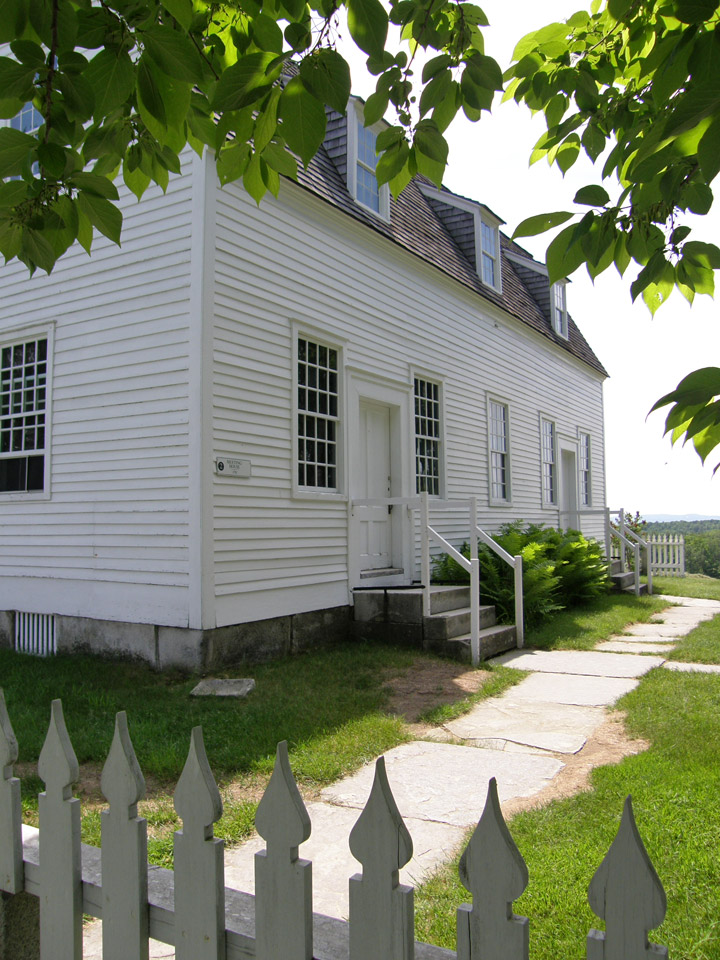

the meeting house at the Canterbury Shaker Village
First granted by Lieutenant Governor John Wentworth in 1727, the town was named for William Wake, Archbishop of Canterbury. It was originally a militia timber fort and trading post of Capt. Jeremiah Clough located on a hill near Canterbury Center, where the Pennacook Indians came to trade. The town would be incorporated in 1741. There were several garrison houses or stockades in the area as late as 1758.
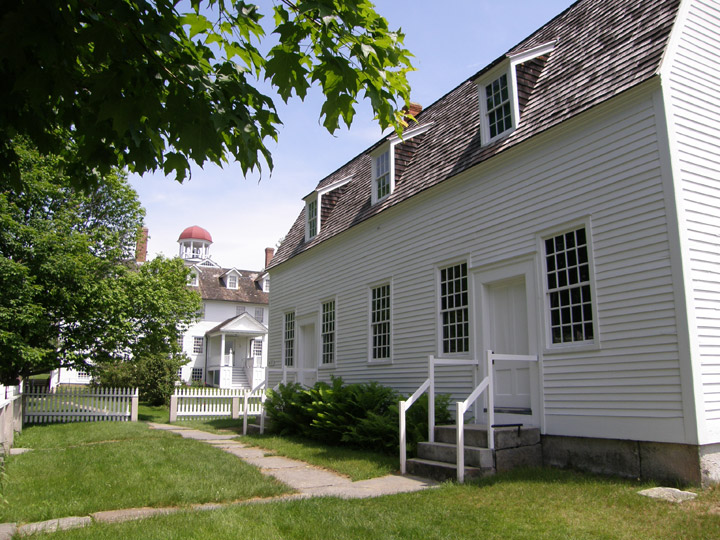
the Meeting House with the Dwelling House in the background
The biggest attraction in Canterbury is the Shaker Village, established in 1792. At its peak in the 1850s, over 300 people lived, worked and worshipped in 100 buildings on 4,000 acres (16 km²). They made their living by farming, selling seeds, herbs and herbal medicines; and by manufacturing textiles, pails, brooms and other products. The last resident, Sister Ethel Hudson, died in 1992, and the site is now a museum, founded in 1969, to preserve the heritage of the utopian sect. Canterbury Shaker Village is an internationally known, non-profit historic site with 25 original Shaker buildings, 3 reconstructed Shaker buildings and 694 acres (2.8 km²) of forest, fields, gardens and mill ponds under permanent conservation easement. It has been designated a National Historic Landmark for its architectural integrity and significance.
Text from Wikipedia
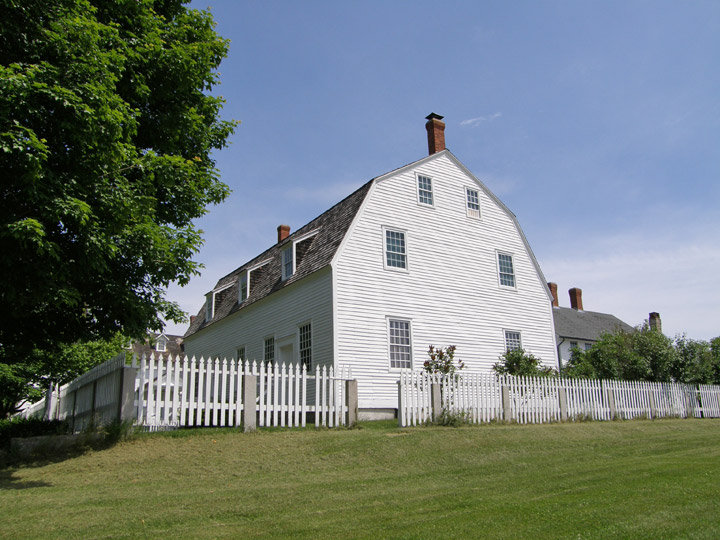
Meeting House
The Shakers

Dwelling House
The Shakers, a Protestant religious denomination officially called the United Society of Believers in Christ's Second Appearing, originated in Manchester, England in 1772 under the leadership of Mother Ann Lee, who moved the nine-person group to New York in 1774.
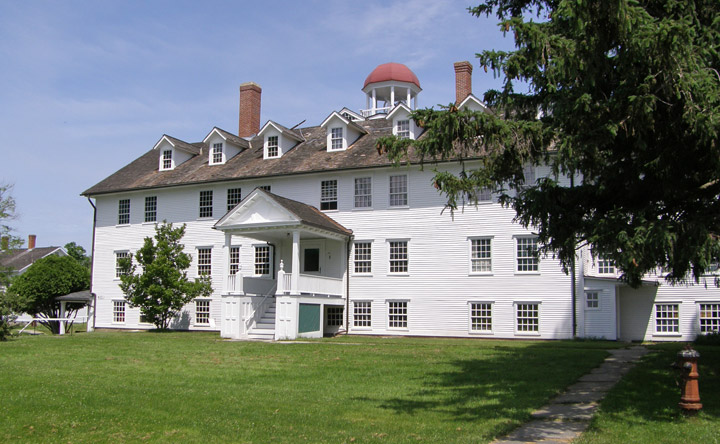
Dwelling House
The oral tradition of the Shakers, gathered at the death of Mother Ann Lee, insists on two dates for the origin of their movement: 1706, the coming of five "French prophets" to London, well recorded in historical sources as camisards from Cévennes in the south of France after a five-year war against the king of France, prophesying the end of times to gather English popular Puritans for the final Armageddon. The second one, 1747, is the first contact of Mother Ann Lee with James Wardley, a preacher who maintained in a small group the "possession by the spirit" of the French prophets. This oral tradition has not found written confirmation, but is consistent with the 18th-century history of English Protestantism, the relegation of popular Puritanism to small groups very reluctant to appear in public as did their Elizabethan ancestors.
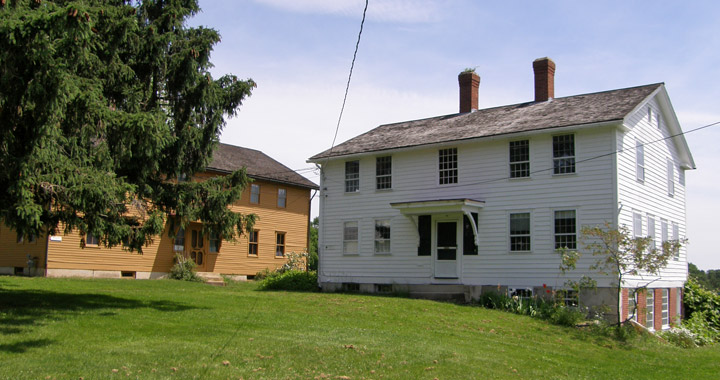
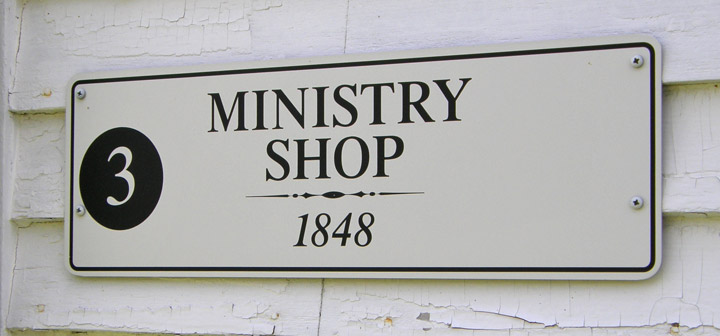
Ministry Shop
The Shakers built 19 communal settlements that attracted some 200,000 converts over the next century. Strict believers in celibacy, Shakers maintained their numbers through conversion and adoption of orphans. Turnover was very high; the group reached maximum size of about 6,000 full members in 1850, but now has only four members left.

East House
The Shakers of New England should not be confused with the religion of the Indian Shakers of the Pacific Northwest of North America. Only a few of the original Shaker buildings are still in use today.
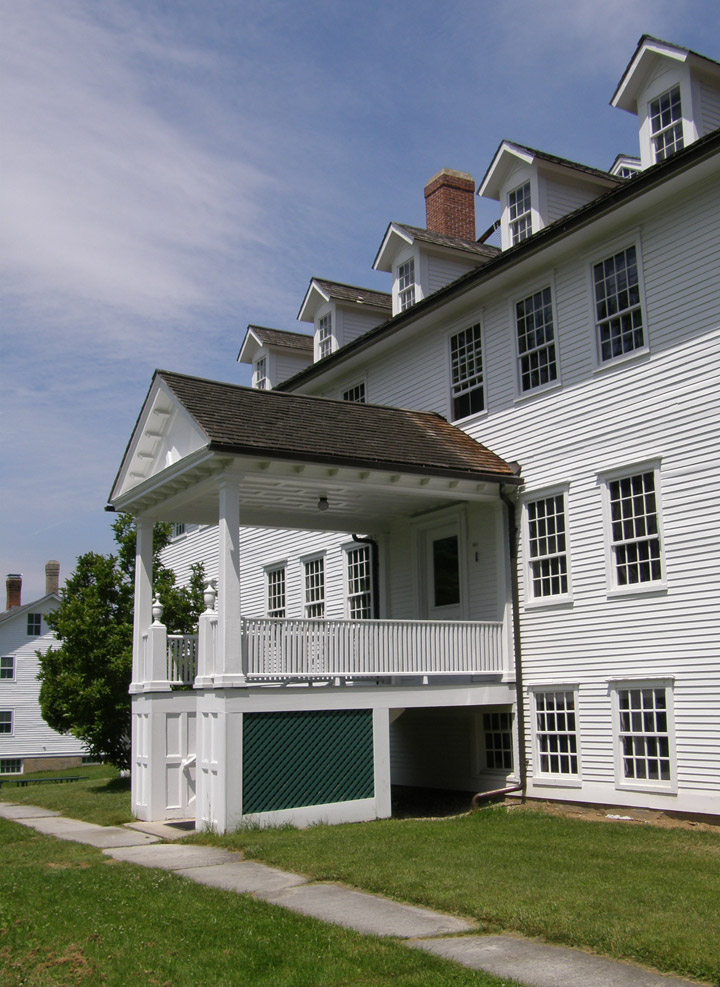
Dwelling House
The name "Shakers," originally pejorative, was derived from the term "Shaking Quakers" and was applied as a mocking description of their rituals of trembling, shouting, dancing, shaking, singing, and glossolalia (speaking in strange and unknown languages). In 1747 Ann Lee pulled together nine of her followers from an English sect known as the Wardleys, founded by Jane and James Wardley, which she joined in 1758. They arrived on August 6, 1774 in New York City, and in 1776 the Shakers settled in Niskayuna, New York, where a unique communal life began to develop and thrive. Lee taught her followers that it is possible to attain perfect holiness. Like her predecessors the Wardleys, she taught that the demonstrations of shaking and trembling were caused by sin being purged from the body by the power of the Holy Spirit, purifying the worshipper. Distinctively the followers of Mother Ann came to believe that she embodied all the perfections of God in female form.

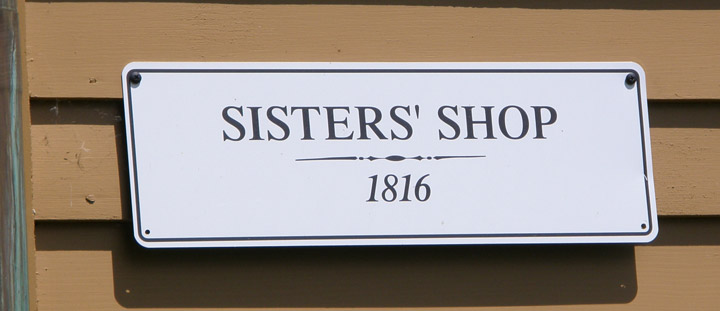
Sister's House
The village was divided into groups or "families" that were named for points on the compass rose. Each house was divided so that men and women did everything separately. They used different staircases and doors, and sat on opposite sides of the room.
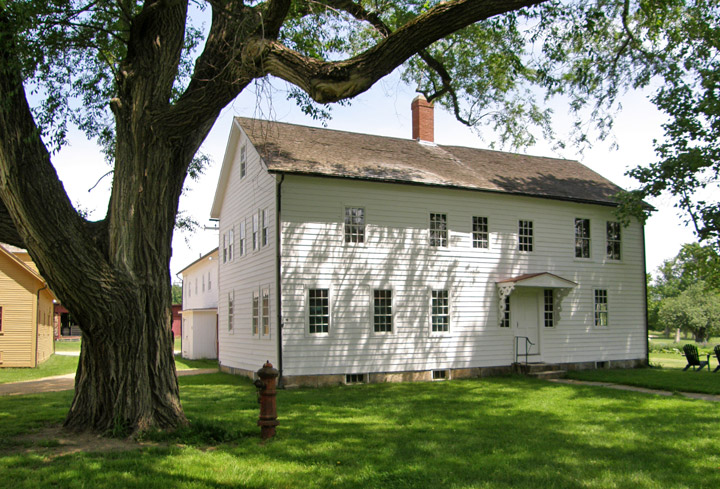
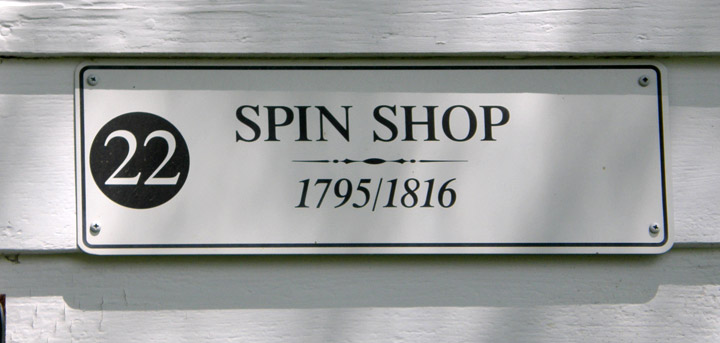
Spin House
A spiritualistic revival in the neighboring town of New Lebanon sent many
penitents to Niskayuna, who accepted Mother Ann's teachings and organized in
1787 (before any formal organization in Niskayuna) the New Lebanon Society, the
first Shaker Society, at New Lebanon (since 1861 called Mt. Lebanon), Columbia
County, New York. The Society at Niskayuna, organized immediately afterwards,
and the New Lebanon Society formed a bishopric. The Niskayuna Shakers, as
pacifists and non-jurors, had got into trouble during the American War of
Independence; in 1780 the Board of Elders were imprisoned, but all except Mother
Ann rose were speedily set free, and she was released in 1781.
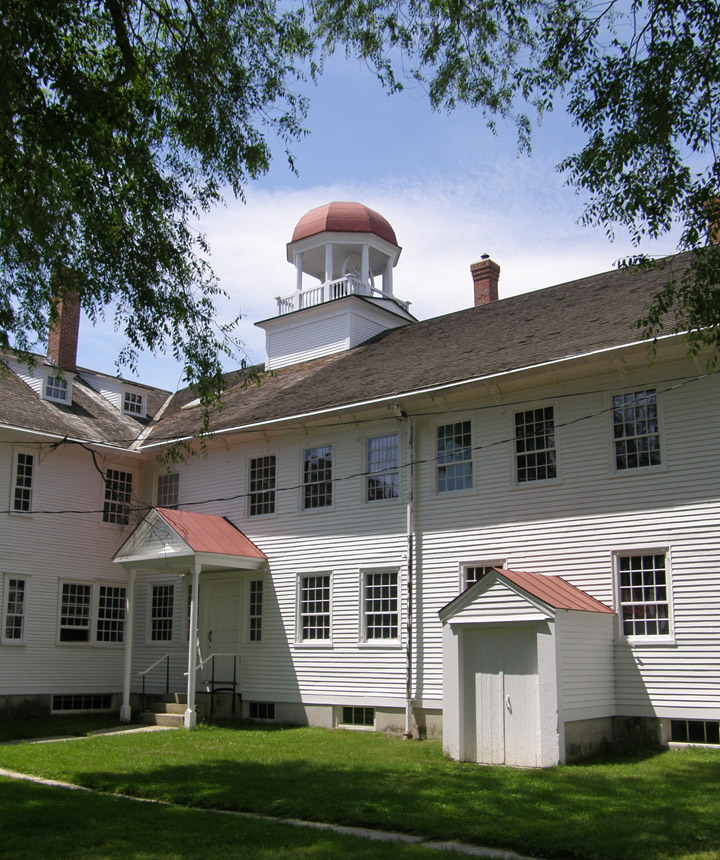
the Chapel extension to the Dwelling House
Between 1781 and 1783 the Mother, with chosen elders, visited her followers in New York, Massachusetts and Connecticut. She died in Niskayuna, New York on September 8, 1784. James Whittaker was head of the Believers for three years. On his death he was succeeded by Joseph Meacham (1742–1796), who had been a Baptist minister in Enfield, Connecticut, and had, second only to Mother Ann, the spiritual gift of revelation. Under his rule and that of Lucy Wright (1760–1821), who shared the headship with him during his lifetime and then for twenty-five years ruled alone, the organization of the Shakers and, particularly, a rigid communalism (religious communism), began. By 1793 property had been made a "consecrated whole" in the different communities, but a "noncommunal order" also had been established, in which sympathizers with the principles of the Believers lived in families. The Shakers never forbade marriage, but refused to recognize it as a Christian institution since the second coming in the person of Mother Ann, and considered it less perfect than the celibate state.
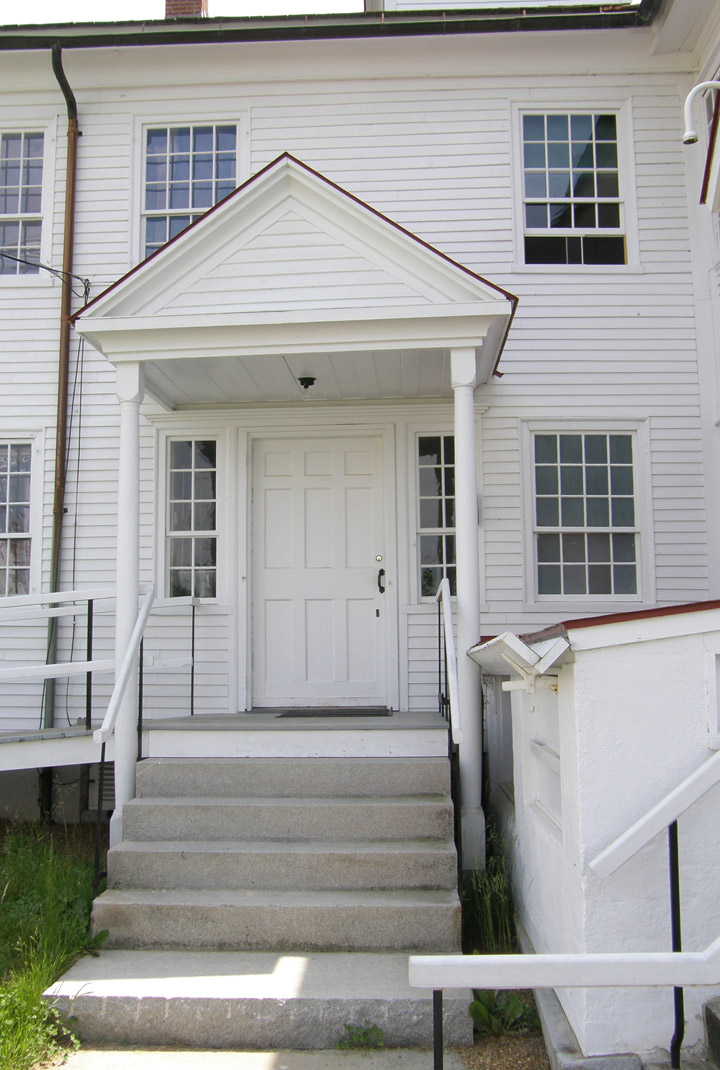
Chapel entrance
Shaker communities in this period were established in 1790 at Hancock, West Pittsfield, Massachusetts; in 1791 at Harvard, Massachusetts; in 1792 at East Canterbury, New Hampshire (or Shaker Village); and in 1793 at Shirley, Massachusetts; at Enfield, Connecticut (then also known as Shaker Station); at Enfield, New Hampshire (or "Chosen Vale"); at Tyringham, Massachusetts, where the Society was afterwards abandoned, its members joining the communities in Hancock and Enfield; at New Gloucester, Maine (since 1890: "Sabbathday Lake"); and at Alfred, Maine, where, more than anywhere else among the Shakers, spiritualistic healing of the sick was practiced. In Kentucky and Ohio, Shakerism entered after the Cane Ridge, Kentucky revival of 1800–1801, and in 1805–1807 Shaker societies were founded at South Union, Logan County, Kentucky, and Pleasant Hill, Kentucky, Mercer County, Kentucky.
Photos of the Shaker Village at Pleasant Hill, Kentucky

pegs for clothing in the Chapel entrance hall
A prominent part in this revival had been taken by Richard McNemar, a Presbyterian, who had broken with his church because of his Arminian tendencies and had established the quasi-independent Turtle Creek Church. McNemar was won by Shaker missionaries in 1805, and many of his parishioners joined him to form the Union Village community in Turtlecreek Township, Warren County, Ohio, four miles west of Lebanon. McNemar was a favorite of Lucy Wright, who gave him the spiritual name Eleazer Riotht, which he changed to Eleazer Wright; he wrote The Kentucky Revival (Cincinnati, 1807), probably the earliest defense of Shakerism, and a poem, entitled A Concise Answer to the General Inquiry Who or What are the Shakers (1808).
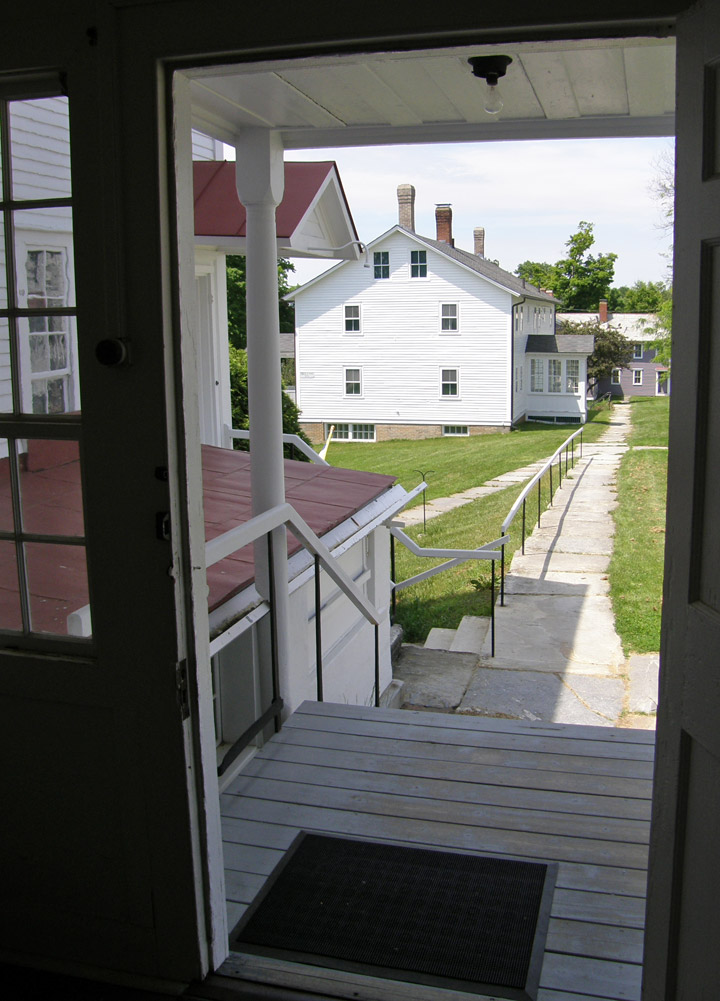
looking from the Chapel entrance to the Enfield House
In 1811 a community settled at Busro on the Wabash in Indiana; but it was soon abandoned and its members went to Ohio and to Kentucky. In Ohio later communities were formed at Watervliet, Montgomery and Greene counties, and at Whitewater, Butler and Hamilton counties. In New York, the communal property at Sodus Bay was sold in 1828 and the community removed to Groveland, or Sonyea; their land here was sold to the state and the few remaining members went to Niskayuna. A short-lived community at Canaan, was merged into the communities in Mount Lebanon (in New Lebanon) and Enfield, Connecticut.
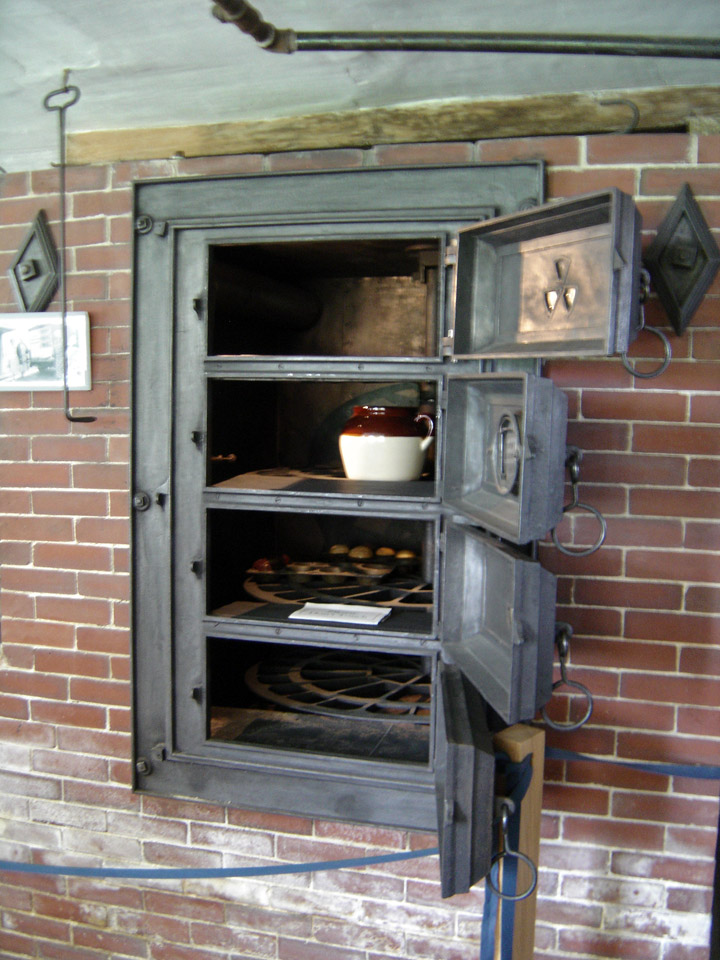
the bake oven, using a rotary tray, in the Dwelling House
The peak was probably reached between 1830 and 1850 at about 6,000 members. The
numerical strength of the sect decreased rapidly, probably from 4,000 to 1,000
from 1887 to 1908, and there has been little effort made to plant new
communities. The Mt. Lebanon Society in 1894 established a colony at Narcoossee,
Florida; the attempt of the Union Village Society in 1898 to plant a settlement
at White Oak, Georgia, was unsuccessful. In 1910 the Union Village Society went
into the hands of a receiver.
At various times, the Shakers had eighteen major communities in eight states and
six smaller communities in Florida and Indiana. The city of Shaker Heights,
Ohio, population 29,000, a suburb of Cleveland, was originally a Shaker
settlement.
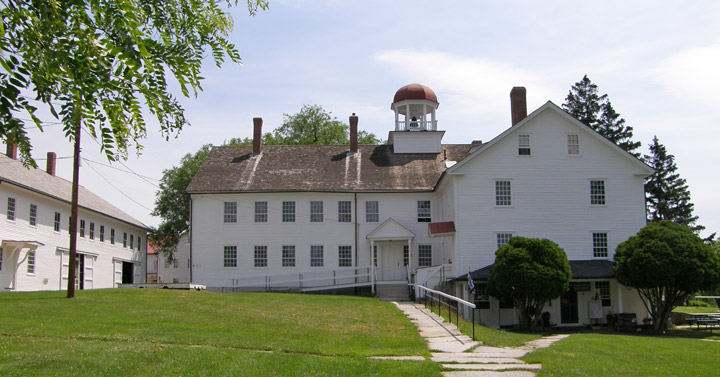
the Chapel and the Summer Kitchen
The lands of the Niskayuna settlement are now the site of the Albany
International Airport, and one house and a small cemetery with Ann Lee's grave
remain adjacent to the airport as a historic site. Much of the Mt. Lebanon
community is now a private boarding school, yet retains much of its original
beauty. There is a small museum on the site. The Hancock Shaker Village just
across the Massacchusetts state line is a museum of Shaker arts. The Enfield,
New Hampshire site is now a Catholic convent.
Today there are but a handful of Shakers remaining, all living at Sabbathday
Lake, Maine.
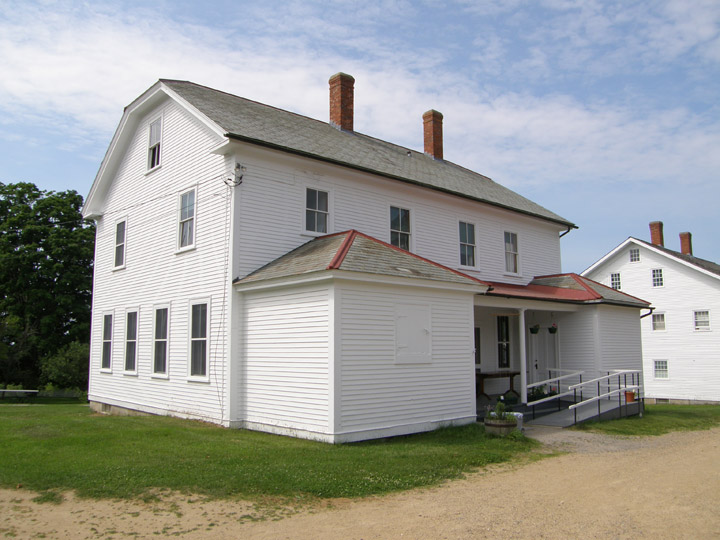
The Shakers did not believe in procreation so therefore had to adopt a child if they wanted one. Another way they could expand their community's population was to allow converts into the Shaker society to live and function as one. When Shaker boys reached the age of twenty-one, they were given the choice to leave the Shaker religion and go their own separate way or to continue on as a Shaker. The Shakers lived in "families" sharing a large house with separate entrances for each family within the "family"; thus the families were exclusively male or female — the sexes were segregated into separate living areas.
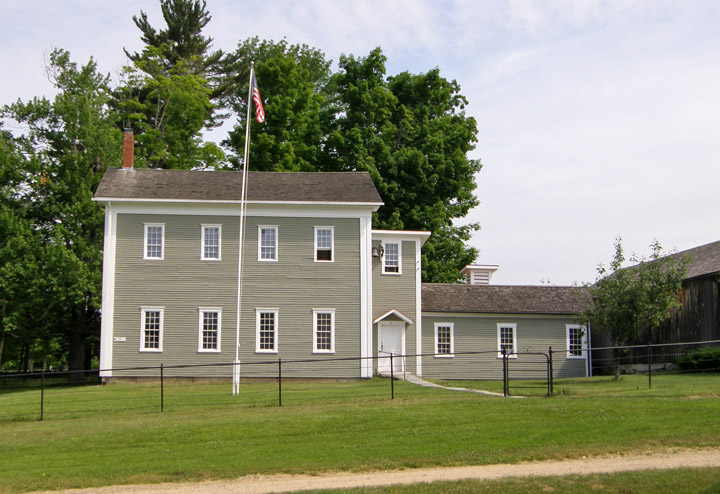
Schoolhouse
A peculiar, intense kind of spirituality began to develop under this unique
arrangement. A period of spiritual manifestations among the Believers began in
1837 and lasted through 1847. Children told of visits to cities in the spirit
realm and brought messages to the community which they received from Mother Ann.
In 1838 the gift of tongues was manifested and sacred places were set aside in
each community, with names like Holy Mount; but in 1847 the spirits, after
warning, left the Believers. The theology of the denomination is based on the
idea of the dualism of God: the creation of man as male and female "in our
image" showing the dual sexuality of the Creator; in Jesus, born of a woman, the
son of a Jewish carpenter, were the male manifestation of Christ and the first
Christian Church; and in Mother Ann, daughter of an English blacksmith, were the
female manifestation of Christ and the second Christian Church — she was the
Bride ready for the Bridegroom, and in her the promises of the Second Coming
were fulfilled. Adam's sin was in sexual impurity; marriage is done away with in
the body of the Believers in the Second Appearance, who must pattern after the
Kingdom in which there is no marriage or giving in marriage. The four virtues
are virgin purity; Christian communism; confession of sin, without which none
can become Believers; and separation from the world. Their insistence on the
dual sexuality of God and their reverence for Mother Ann have made them
advocates of sex equality. Their spiritual directors are elders and "eldresses,"
and their temporal guides are deacons and deaconesses in equal numbers.
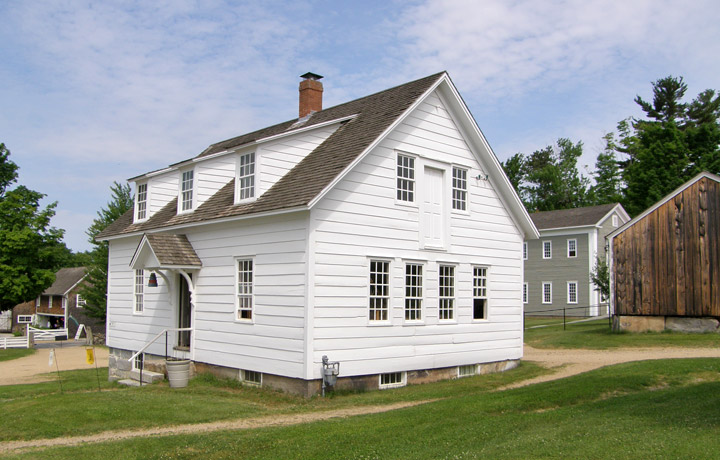
Carpenter's Shop
The prescribed uniform costume with woman's neckerchief and cap, and the custom
of men wearing their hair long on the neck and cut in a straight bang on the
forehead, still persist; but the women wear different colors. The communism of
the Believers was an economic success, and their cleanliness, honesty and
frugality received the highest praise. They made leather in New York for several
years, but in selling herbs and garden seeds, in making apple-sauce (at
Shirley), in weaving linen (at Alfred), and in knitting underwear they did
better work.
"Do your work as though you had a thousand years to live and as if you were to
die tomorrow."
"Put your hands to work, and your heart to God."
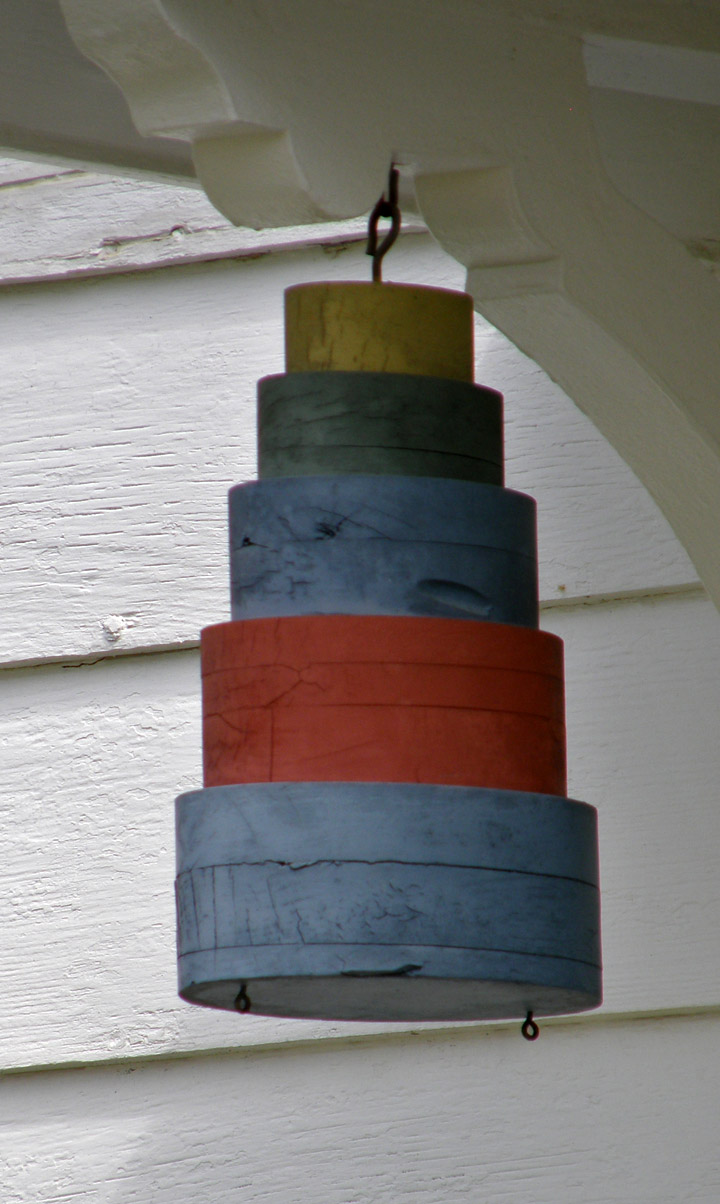
hanging lantern in the form of Shaker boxes
Shakers were known for a style of furniture, known as Shaker furniture. It was
plain in style, durable, and functional. Shaker chairs were usually
mass-produced since a great number of them were needed to seat all the Shakers
in a community. Around the time of the American Civil War, the Shakers at Mount
Lebanon, NY, greatly increased their production and marketing of Shaker chairs.
They were so successful that several furniture companies produced their own
versions of "Shaker" chairs. Because of the quality of their craftsmanship,
original Shaker furniture is costly. One Shaker chair, actually a tall stool,
sold recently for just under US$100,000.
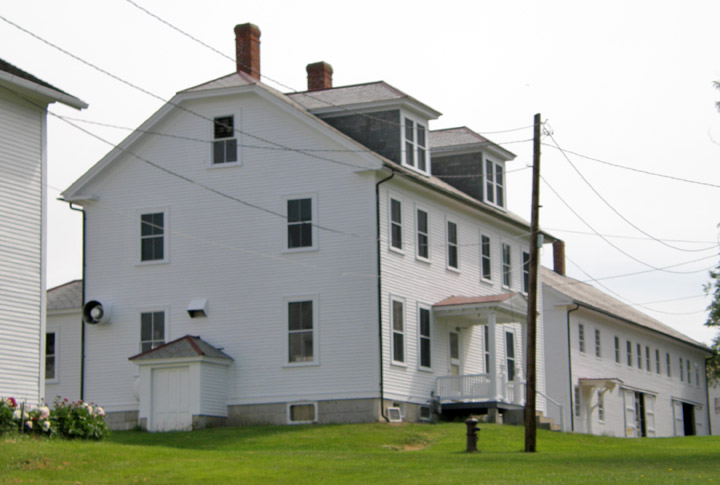
North Shop on the right
Shakers worshipped in plain meetinghouses where they marched, sang songs, danced, twitched and shouted. Many outsiders who witnessed Shaker worship services considered them heretics and protested in front of their places of worship. Mother Ann was arrested several times for disturbing the peace. Early Shaker worship services were unstructured, loud, chaotic and emotional. However, later on, Shakers developed precision dances and orderly rituals. The Shakers have also written thousands of religious songs.
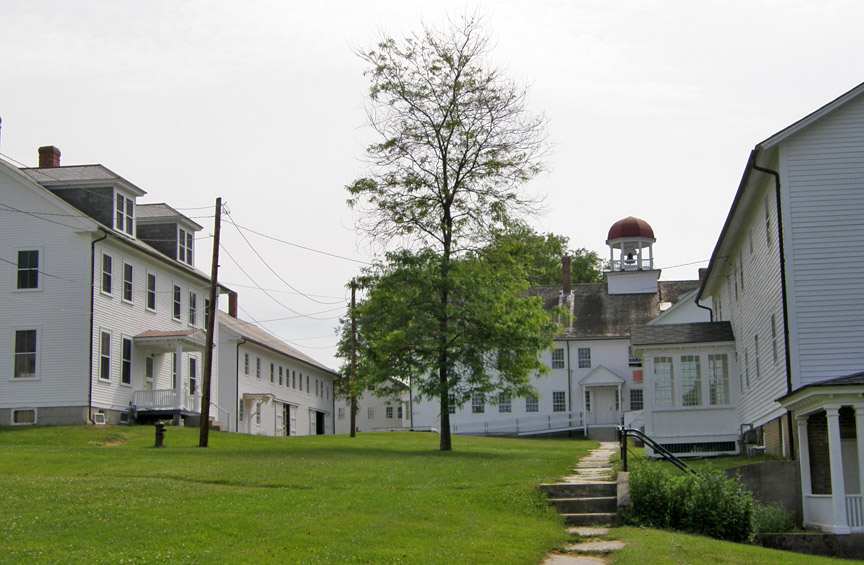
Shaker Village complex
The meeting-houses were painted white and unadorned, with shutters and carvings
eschewed as worldly things. The Shakers believed in the value of hard work and
kept comfortably busy. Each member learned a craft and did chores. Mother Ann
said, "Labor to make the way of God your own; let it be your inheritance, your
treasure, your occupation, your daily calling."
Text from Wikipedia